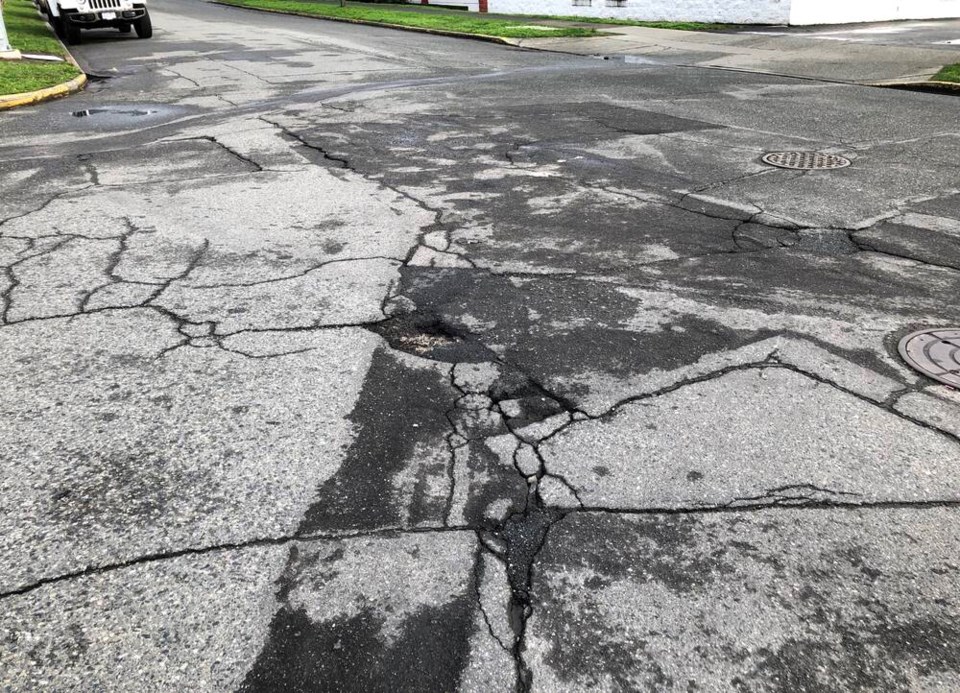A commentary by the vice-chair of Grumpy Taxpayer$ of Greater Victoria, a non-partisan citizens advocacy group for municipal taxpayers.
Back in the day when there was adequate road maintenance, local politicians would suit up and gather around for photos, bring out a giant pair of scissors and cut a nice, oversized red ribbon.
When you think about it, the theatre was celebratory if not silly, but at least taxpayers knew tax dollars went to something tangible and important.
Award-winning magazine Conde Nast might have awarded Victoria tops in the “world’s best cities” and Victoria might have topped the ranking of “most livable cities in Canada” in a recent Globe and Mail report, but for locals the neglected roads in the city of Victoria are shameful.
At a “special” committee-of-the-whole meeting Nov. 27, council learned once again about the dreadful and deteriorating condition of roads. Road budgets were beggared, particularly from 2003 to 2020 — and despite some catch-up the past couple of years, roadways are still in shambles and getting worse.
Some 56 per cent of 279 kilometres of roadway pavement are considered poor or very poor, compared to just five per cent a decade ago, according to a 2022 asset management report.
Over the next 10-20 years, the risk of major or arterial road degradation is considered medium, while that of local roads is high.
What’s worse, the availability of funds for higher risk assets’ replacement cost is only “partially funded,” requiring a sustained effort for major roads. As for local roads, they are deemed “underfunded.”
At this early stage of the budget cycle, despite the increased cost of labour, asphalt (up 11 per cent), material, increased WorkSafe regulations, traffic control, and so on, council thinks the roadworks budget for 2024 shouldn’t be increased substantially.
Delaying the inevitable rockets the costs of repairs and rehabilitation, as much of the road system is at a critical juncture where it must be addressed.
The alternative is to continue to neglect the road system and let taxpayers pay much, much more to bring everything to a reasonable standard, city staff explained to council.
The path forward must include focusing on priority infrastructure needs, not nice-to-do, legacy projects such as the $12-million upgrade of Centennial Square. Five years after that project was started, the project scope and cost makes little sense in this post pandemic, inflationary era.
Taxpayers know enough to replace an old roof before it leaks rather than wait and throw away money when costs multiply. There’s less money then for paying other bills.
To state the obvious, good governance includes maintaining and investing in critical infrastructure.
To address those needs, though, a proposed funding strategy for the next five years would result in property taxes in Victoria increasing about 50 per cent.
That would be deadly for many residents and businesses.
So on the off-chance taxpayers might get more roads rehabilitated and truckloads of tax dollars saved after reevaluating dreamy projects, Grumpy Taxpayer$ will pay for the red ribbon (probably cheap stuff from one of the dollar stores).



